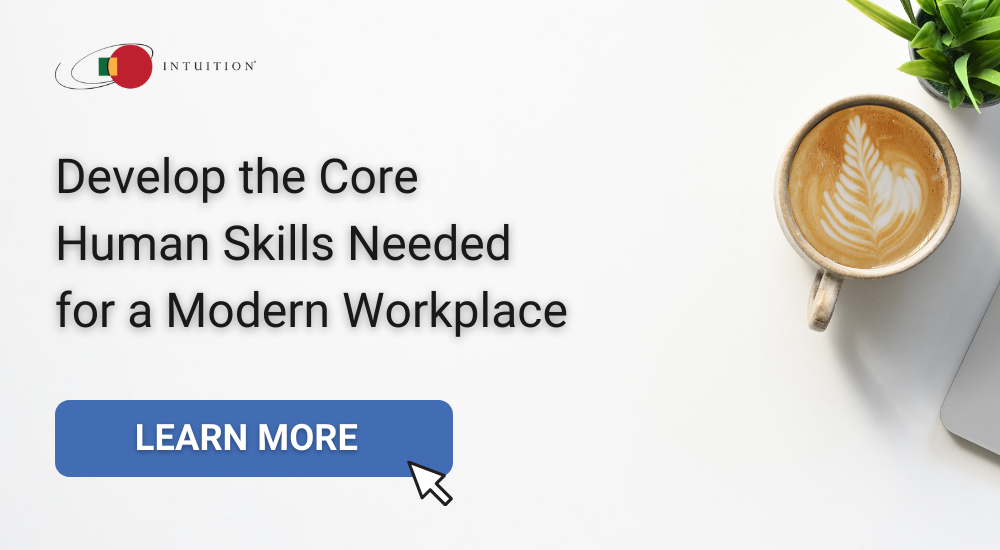How to Become a Critical Thinker Using this 3 Step Process
As organizations look to transition to a hybrid work model, new skill requirements have emerged.
Critical thinking was named as one of the required skills of the future in a recent study by McKinsey. The survey of 18,000 people identified critical thinking as a key cognitive skill required by the modern workforce.
Related article: Why Mindset Matters: A Creative Approach to Human Skill Building

What is critical thinking?
Critical thinking is an intellectual process that involves a number of skills.
These include:
- Observation
- Analysis
- Inference
- Communication
- Problem Solving
Observation
Being able to notice and absorb information about the world around you is the basis of critical thinking.
Analysis
Once a problem is identified, analysis becomes essential.
Inference
Inference involves forming an opinion or drawing conclusions based on the information at your disposal.
Communication
Communication is the ability to effectively share and receive information with others verbally, nonverbally, and in writing.
Problem solving
This is the final element. Once you’ve identified the problem, gathered all the relevant information, analyzed it, inferred and discussed potential solutions with others, it’s time to take the final step and make a decision.
To develop the above skills, we recommend using a three step process:
- Define the problem
- Evaluate the data
- Make the decision
Step 1: Define the Problem
How do you approach a problem? They say ‘fools rush in’ but not critical thinkers. One of history’s greatest critical thinkers, Albert Einstein, had this to say about problem solving:
“If given an hour to solve a problem, I would spend five minutes on the solution and the rest of that hour defining the problem.”
Clearly, Einstein emphasized defining the problem, getting a good handle on things before deciding what to do. It makes perfect sense.

To define a problem, information is key. Gathering information requires the development of three key skills:
- Observational skills
- Active listening
- Attention to detail
Observational skills
Observation skills refer to the ability to use all five of our senses to recognize, analyze and recall our surroundings. The importance of each sense varies depending on your job – chefs rely particularly on sight, smell, and taste, musicians are closely focused on sound. For the rest of us, the two most important senses tend to be our eyes and ears.
Active listening
Active listening is the ability to:
- Focus completely on a speaker
- Hear what they’re saying
- Understand the information they’re giving you, and respond appropriately
It involves paying attention to both the speaker’s verbal and nonverbal cues, such as tone of voice, body language, and facial expressions.
Attention to detail
Attention to detail is the ability to approach and complete tasks with thoroughness and accuracy. It is key to defining and solving problems because, very often, ‘the devil is in the details’. Sometimes problems can be solved with just minor changes. Equally, they can be caused by overlooking something small which then snowballs over time into something much bigger.

Step 2: Evaluate the Data
Finding information is easy. It’s available to us 24 hours a day, seven days a week. But not all of it is reliable which is why the ability to evaluate that data, to critically review what we see, hear, and read is so important.
Here’s how to get the most out of your data:
- Never rush to judgement
- Evaluate quantitative data
- Evaluate qualitative data
Never rush to judgement
A common mistake is jumping to conclusions – making rash judgements that are often wrong.
The most common instances in which we jump to conclusions are when we decide:
- About the other person’s thoughts and feelings
- About what will happen in the future
- Based on group stereotypes
Our evaluation of data is what determines our final decision. No matter how detailed the information, if we use faulty reasoning to reach a conclusion, the result will be less successful than it could or should have been.
Evaluate quantitative data
Quantitative data is data that can be counted or measured, like annual income, distance, age, height, weight, and so on.
Because quantitative data has a numerical value, it is suitable for statistical analysis. We can find the range (the difference between the highest and lowest scores), the minimum and maximum (the lowest and highest scores in a dataset), and frequency (how often a certain value appears in the dataset) as well as measures of central tendency like the mean, mode and median.
Quantitative data is used widely in the sciences, psychology, sociology, and marketing as a way to provide evidence that a theory is correct.
Evaluate qualitative data
Quantitative data captures things that can be counted and measured. Qualitative data deals with more descriptive information like how local residents feel about the new traffic management system in their neighborhood or what they think about a new flavor of ice cream.
Qualitative data is therefore descriptive and, typically, unstructured. It usually takes the form of words and text— product reviews, customer testimonials and interview transcripts are all examples.
Qualitative data is generally gathered through observations and interviews. The information gathered is dynamic and subjective, and so open to interpretation. However, qualitative data helps us to look at certain behaviors and answer questions like why and how.

Step 3: Make the decision
The whole purpose of learning to think critically is so that we can make better decisions – preferably the best decisions, given the circumstances.
Critical thinking teaches us to define the problem, so we know exactly where to focus our efforts. It encourages us to use our observation skills and attention to detail to gather all the relevant information. Then it directs us to spend time evaluating that data before finally making an informed decision.
Of course, making decisions isn’t as easy as it sounds. The more important the decision, the higher the stress associated with it.
Decision-making tools
If decision-making is not your strong suit, here is a range of the most widely-used and successful decision-making strategies available:
- Pros and Cons
- Decision matrix
- SWOT analysis
- PESTLE analysis
- Six Thinking Hats ©
Each one of these tools has its own merits and can help clarify your thinking when it comes to decision time.
1 Pros and cons
Sometimes a straightforward listing of the pros and cons (that is, the strengths and weaknesses) of each option can provide clarity on which is the right decision to make.
2 Decision matrix
A decision matrix is a selection tool used to make the best choice out of many options while basing on a series of criteria.
3 SWOT analysis
A SWOT analysis (Strengths, Weaknesses, Opportunities, Threats) is a more sophisticated decision making tool than the two options above.
4 PESTLE analysis
A PESTLE analysis is a much more comprehensive version of the SWOT analysis and is a tool that is used to make strategic decisions in businesses and boardrooms all over the world.
5 Six Thinking Hats©
Edward de Bono, originator of the Six Thinking Hats© approach, has created a technique that helps individuals and teams look at problems and situations from a variety of perspectives in a unified way. The trick is the technique directs participants on ‘how to think’ not ‘what to think’. Each hat is a metaphor for a different perspective, for example, creative, logical, intuitive or cautious.
Conclusion
In conclusion, the ability to think critically is underpinned by several skills such as:
- Observation
- Analysis
- Inference
- Communication
- Problem solving
The first step when problem-solving is to thoroughly define the problem using the aforementioned skills.
Once the problem is adequately defined, the associated data can be assessed and the final decision can be made. There are several practical tools you can use to make your final decision, including:
- Pros and Cons
- Decision matrix
- SWOT analysis
- PESTLE analysis
- Six Thinking Hats ©
In response to the emergence of the hybrid workplace, key skills such as critical thinking are now more important than ever before. As some employees gradually make their way back to the office and others permanently set up shop in their homes, the ability to think in a critical and effective manner will grow in importance over the coming weeks and months.
Workplace Now is a learning program designed to build the essential human skills needed in every job, now and into the future.
If you would like to learn more about the Workplace Now program, please click here.


